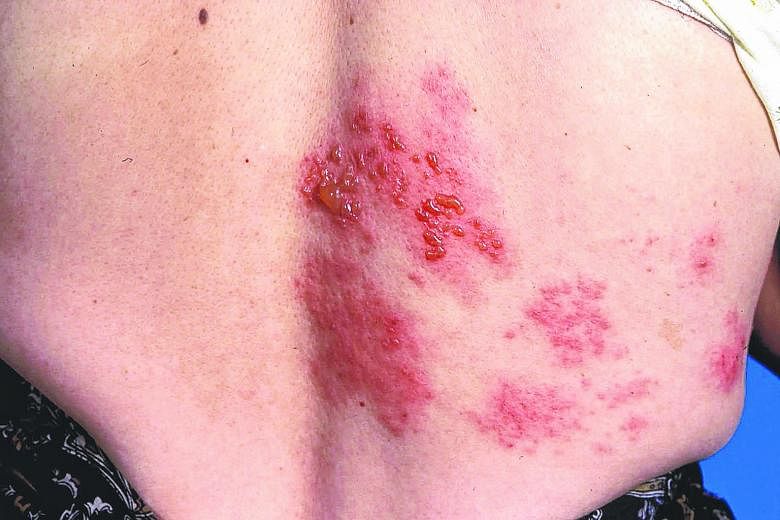About one in three people who get chicken pox will suffer from shingles later in life, as both conditions are caused by the varicella zoster virus. When they do, they may be crippled by chronic nerve pain for months or years after the blistering rash on their bodies has subsided.
In a recent study, two out of 51 patients aged 50 and above developed post-herpetic neuralgia, in which pain from shingles persists because there is irreversible damage to nerve fibres, said Dr Ho Kok Yuen, clinical director of the Pain Management Service at Raffles Hospital.
They had such severe pain that they required intravenous painkillers, said Dr Ho, who was the study's lead investigator.
The findings were presented at a media briefing earlier this month.
The risk and severity of shingles increase with age, as the immune system weakens and allows the virus to be reactivated.
-
HOW TO RELIEVE THE SYMPTOMS
-
•Wear loose-fitting clothes.
•Hold a cold towel against the affected area to alleviate the burning sensation.
•Avoid hot baths.
•Put a non-adhesive dressing over the rash.
•Apply calamine lotion to blisters, but do not bandage them.
•Avoid scratching or bursting the blisters. Let them dry up on their own.
•If the rash does not appear to be healing, a secondary bacterial infection may have occurred. See a doctor to get topical antibiotic treatment.
•Distract yourself from the itch, such as by holding ice cubes in your hands.
•If you do not get sufficient relief from over-the- counter painkillers, see a doctor for stronger painkillers, such as morphine and oxycodone.
•Go to a doctor quickly because oral anti-viral therapy should be given within 48 hours of the onset of a rash to reduce its severity.
The annual incidence of shingles increases from one per 1,000 people under 20 to 10 per 1,000 people above the age of 80.
That is why vaccination is recommended to those over 50.
"Studies have shown that patients who still developed shingles after receiving the vaccine had their pain reduced by 60 per cent to 70 per cent." But for those who are already suffering from the condition, he suggests these ways (see box) to manage the symptoms .

